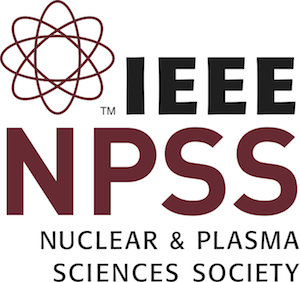Monday, June 24, 8:00 – 9:00 AM
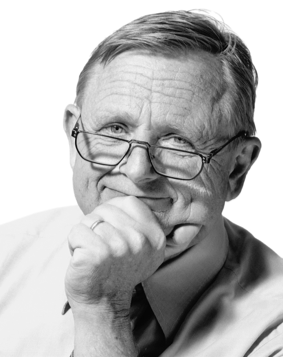
Pulsed Power and Transient Plasma With Biomedical, Defense, Energy, and Environmental Applications
Martin Gundersen
University of Southern California
Abstract:
This talk will review a university program that overlaps pulsed power and plasma science, and will describe applications to industrial, environmental, biomedical and defense problems. It will present some background for the development of the research, and the ideas underlying transient plasma, or plasma in a formative phase, which is key to some of these studies. Transient plasma can produce volume ignition of various fuels and engines with lower energy cost, for example, considerably reduced delay to ignition in pulse detonation engines, higher peak pressure for internal combustion engines, and improved energy efficiencies in emissions abatement. Biomedical applications include studies of nanosecond pulsed electric fields for the induction of programmed cell death in cancer cells in vitro and in vivo which have led to animal studies conducted with catheter-based pulsed power delivery systems, and the formation of commercial entities translating the research to medical applications. Finally, a project (tenuously connected to pulsed power) to foster and encourage interest in science and engineering and improve perceptions of science in society through movies will be described.
Biography:
Martin Gundersen is the Lloyd F. Hunt Professor of Electrical Power Engineering at the University of Southern California (USC) with appointments in Electrical Engineering, Physics and Astronomy, and Chemical Engineering and Materials Science. He is Life Fellow of the IEEE, Fellow of the Optical Society of America, recipient of the Sol Schneider Award (IEEE Power Modulator and High Voltage Conference), the Germeshausen Award (IEEE Power Modulator Symposium) and 2015 USC Associates Award for “Creativity in Research and Scholarship”. The Citrus Community College (Glendora CA) Automotive Advisory Committee member of the year, 2014-2015, the 2018 American Institute of Aeronautics and Astronautics Plasmadynamics and Lasers Award, and the co-awardee of the 2018 award for 2012-2016 most Influential Bioelectromagnetics paper. He has chaired and organized meetings including a NATO ARW Workshop, the Power Modulator Conference, and other meetings. He organized American Film Institute “Catalyst” Workshops for teaching aspects of the entertainment industry to scientists and engineers, and has been technical advisor for several films. Spin-off companies include Pulse Biosciences and Transient Plasma Systems. His research interests include pulsed power science and engineering, medical, biomedical, and agricultural applications of pulsed power, and science education.
Monday, June 24, 2:30 – 3:30 PM
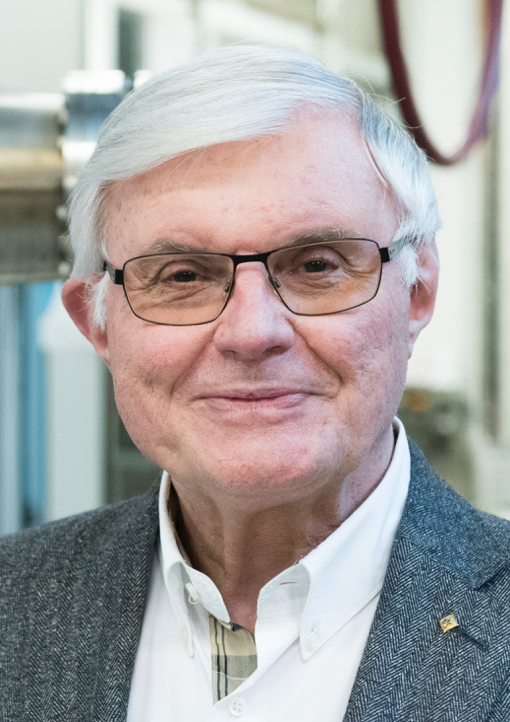
The Wendelstein 7-X Stellarator: Plasma Generation, Heating and Current-Drive with the Worldwide Largest Electron Cyclotron Heating Facility
Manfred Thumm
Karlsruhe Institute of Technology
Abstract:
The stellarator Wendelstein 7-X (W7-X) is equipped with a steady-state capable 10 MW ECH system, operating at 140 GHz, which corresponds to the 2nd cyclotron harmonic of electrons in the magnetic field of 2.5 T. Ten megawatt-class gyrotrons, two 5 MW quasi-optical transmission lines (94 % transmission efficiency) as well as 4 directly steerable and 2 novel remotely steerable launchers inside the plasma vessel are operational and already delivered more than 7 MW X2-mode heating to W7-X plasmas. Besides the reliable plasma start-up and routine ECH wall conditioning, stationary discharges up to 100 s have been achieved, which were only limited by the maximum test divertor energy load. Combined with pellet injection, the highest triple product (0.68×1020 keV m−3 s), observed up to now in stellarators, was achieved, exclusively by electron heating heating [T Sunn Pedersen et al 2019, Plasma Phys. Control. Fusion 61, 014035]. The corresponding plasma parameters were Ti0=Te0=3.8 keV, ne0=0.91020 m-3 and E=0.22 s. For the first time, dense W7-X plasmas were sustained by 2nd harmonic O-mode (O2) heating, approaching the collisionality regime for which W7-X was optimized [T Stange, submitted to PRL]. O-mode heating needs high Te and multi-pass absorption that was obtained by tungsten covered Mo mirror tiles with holographic gratings at the inner wall. After boronization of the plasma vessel, stationary O2-heated plasmas above the X2 cut-off with hydrogen gas fueling only; hydrogen plasmas with 6 MW ECRH for 30 s at only 1 MW divertor heat load (detached plasma), thermalization (Ti=Te=1.5 keV), density 1.61020 m-3 and radiation control with Wdia=800 kJ were achieved, which is a reference scenario for later long-pulse high density discharges. Power deposition scans did not show any indication of electron temperature profile resilience. In low-density, low-power plasmas compensation of the bootstrap current with electron-cyclotron current drive (ECCD) was demonstrated [RC Wolf et al 2019 Plasma Phys. Control. Fusion 61, 014037]. The long discharges were used to demonstrate current control and bootstrap current compensation by ECCD. Until 2018, the plasma vessel was equipped with an uncooled divertor, which allowed to extend the integrated heating energy from 4 MJ to 80 MJ. The full steady-state capability will be reached in 2021, after an actively cooled high heat-flux divertor has been installed which can tolerate steady-state heat fluxes of up to 10 MW/m2. Plans for later upgrades include a further increase of the ECH power to 18 MW and the introduction of tungsten as a first-wall material.
Biography:
Manfred Thumm (SM’94-F’02-LF’19) was born in Magdeburg, Germany. He received the Dipl.-Phys. and Dr. rer. nat. Degrees in Physics from University of Tübingen, Germany, in 1972 and 1976, respectively.
At University of Tübingen he was involved in the investigation of spin-dependent nuclear forces in inelastic neutron scattering. In 1976 he joined the Institute for Plasma Research of University of Stuttgart, Germany, where he worked on RF production and heating of toroidal pinch plasmas for thermonuclear fusion research. From 1982-1990 his research was devoted to electromagnetic theory and experiments in the areas of component development for transmission of high-power millimeter waves through oversized waveguides for RF plasma heating with microwaves. In June 1990, he became Full Professor at Institute of Radio Frequency Engineering and Electronics of University of Karlsruhe, Germany, and Head of the Gyrotron Development and Microwave Technology Division, Institute for Technical Physics, Research Center Karlsruhe (FZK). From 1999-2011 he was Director of the Institute for Pulsed Power and Microwave Technology, FZK. On October 1, 2009, University of Karlsruhe and FZK have merged to Karlsruhe Institute of Technology (KIT).
M. Thumm has authored/co-authored 6 books, 21 book chapters, more 415 papers in peer-refereed scientific journals, about 1550 conference proceedings articles and 14 patents. His current research projects have been the development and application of high power gyrotrons, dielectric vacuum windows, transmission lines and antennas for nuclear fusion plasma heating and industrial materials processing.
He was General Chair of the IRMMW-THz 2004 and IEEE ICOPS 2008 Conferences in Karlsruhe and has been member of International Organization and Advisory Committees of many International Conferences and member of the Editorial Boards of several ISI refereed journals. From 2003-2010 he was Ombudsman for upholding good scientific practice at KIT. Since 2012, he has been Editor for Vacuum Electron Devices of IEEE Trans. on Electron Devices, Distinguished Lecturer of IEEE NPSS, and KIT Distinguished Senior Fellow. Since 2016, he serves as member of the Scientific-Advisory-Council of Leibniz Institute for Plasma Science and Technology Greifswald, Germany. He was former member of the IEEE EDS Vacuum Devices Technical Committee and the NPSS PSAC Executive Committee.
M. Thumm was awarded with the Kenneth-John-Button-Prize 2000. In 2002, he received the title of Honorary Doctor, from the St. Petersburg Technical University. He received the IEEE-EDS 2008 IVEC Award for Excellence in Vacuum Electronics. In 2010, he was awarded with the IEEE-NPSS Plasma Science and Applications Award. He was a winner of the 2010 open grant competition of the Government of the Russian Federation (Leading Scientist at Novosibirsk State University). Together with A. Litvak and K. Sakamoto, he has been the recipient of the EPS Plasma Physics Innovation Prize 2011. In 2012 he was awarded with the Heinrich-Hertz-Prize of the EnBW-Foundation and the KIT-HECTOR-School-Teaching-Award. In 2017 he received the Exceptional-Service-Award of the IRMMW-THz Society and in 2018 the IEEE NPSS Merit Award for his outstanding contributions and leadership in the field of electron cyclotron heating and current drive technology for thermonuclear fusion plasma research.
Tuesday, June 25, 8:30 – 9:30 AM
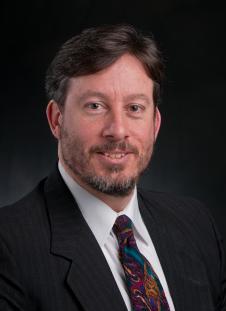
From Multipactor to Ionization Breakdown: Review and Recent Advances
John Verboncoeur
Michigan State University
Abstract:
Multipactor and its transition to gaseous ionization breakdown remain one of the most significant limitations in RF device operation, particularly at high power. Nonlinear effects can couple multiple carrier frequencies, cause instabilities and dispersion, and result in temporary failure as well as permanent damage. These phenomena are relevant to conducting and dielectric surfaces, in devices ranging from communications to high power microwave sources, to accelerators and even high gradient microwave circuits and devices.
In this ongoing work, carried out over the past decade, we examine the process of initial multipactor growth, surface heating and gas desorption, and subsequent evolution to ionization breakdown. We look at a variety of mitigation schemes, from spatio-temporal signal modulation to surface morphology and materials properties.
This work is part of a larger effort which includes development of standardized platforms in planar, coaxial, and stripline configurations, with both computational and experimental analogs to enable validation and develop analytic and predictive capability integrated with well-tested experiments. The test cells enable study of multipactor susceptibility and transition to ionization breakdown, as well as novel material, geometric, and electrical mitigation schemes in isolation or as a system. Test cell designs allow variations in gap spacing, driving frequency, waveform shape, ambient and desorbed gas, surface morphology, and many other key parameters. The cells will motivate integration and development of novel diagnostics, such as direct multipactor electron detection, optical/VUV emission spectroscopy, and X-ray imaging, at ns timescales and sub-mm- spatial scales.
The test cells and corresponding models will be published in detail and made available to the community as standard reference platforms on which repeatable basic physics results can be studied, validated, benchmarked, and openly published.
Biography:
John P. Verboncoeur received a B.S. (1986) in Engineering Science from the University of Florida, M.S. (1987) and Ph.D. (1992) in Nuclear Engineering from the University of California-Berkeley (UCB), holding the DOE Magnetic Fusion Energy Technology Fellowship. After serving as a joint postdoc at Lawrence Livermore National Laboratory and UCB in Electrical Engineering and Computer Science (EECS), he was appointed Associate Research Engineer in UCB-EECS, and to the UCB Nuclear Engineering faculty in 2001, attaining full Professor in 2008. He served as the Chair of the Computational Engineering Science Program at UCB from 2001-2010. In 2011, he was appointed Professor of Electrical and Computer Engineering at Michigan State University, and added an appointment as Professor of Computational Mathematics, Science, and Engineering in 2015. His teaching includes electromagnetics, plasma physics, neutronics, engineering analysis, and computation. His research interests are in theoretical and computational plasma physics, with a broad range of applications spanning low temperature plasmas for lighting, thrusters and materials processing to hot plasmas for fusion, from ultra-cold plasmas to particle accelerators, from beams to pulsed power, from intense kinetic nonequilibrium plasmas to high power microwaves. He is the author/coauthor of the MSU (formerly Berkeley) suite of particle-in-cell Monte Carlo (PIC-MC) codes, including XPDP1 and XOOPIC, used by over 1000 researchers worldwide with over 450 journal publications in the last decade. He has authored/coauthored over 400 journal articles and conference papers, with over 4000 citations, and has taught 15 international workshops and mini-courses on plasma simulation. He is currently an Associate Editor for Physics of Plasmas, and has served as a guest editor and/or frequent reviewer for IEEE Transactions on Plasma Science, IEEE Transactions on Electron Devices, as well as a number of other plasma and computational journals. He is Past President of the IEEE Nuclear and Plasma Sciences Society, a member of the IEEE TAB Management Committee, and IEEE Division IV Director. He serves on the US Department of Energy Fusion Energy Sciences Advisory Committee. Appointed Associate Dean for Research and Graduate Studies in the College of Engineering in 2014, he oversees college research activities of about $60M, research strategy including leading a 40% increase of tenure system faculty over 4 years, and leading key initiatives in mobility and SmartAg. He has been involved in a number of technology startup companies, including development of one of the big three consumer credit reports, worked on the hardware and software of the US Postal Service Mail Forwarding System, command and control software in the defense sector, computerized exercise equipment, and a pioneering cloud based health care management system. He currently serves on the Board of Directors of the American Center for Mobility national proving ground for connected automated vehicles. He is a fellow of the IEEE, and was awarded the IEEE NPSS Richard F. Shea Distinguished Member Award in 2018.
Tuesday, June 25, 2:30 – 3:30 PM
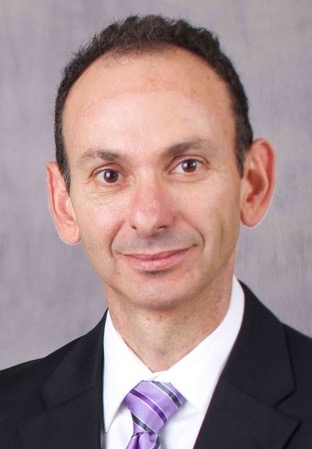
Sustained Fusion Reactions from a Sheared-Flow-Stabilized Z Pinch
Uri Shumlak
Aerospace & Energetics Research Program, University of Washington, Seattle
Abstract:
The Z-pinch plasma configuration is one of the earliest magnetic confinement concepts. It has a simple cylindrical geometry and an equilibrium characterized by radial force balance in which plasma pressure is confined by an axial (Z) current. The force balance indicates that fusion conditions can be achieved through plasma compression simply by increasing the current; however, virulent pressure-driven instabilities quickly destroy the equilibrium and obfuscate the path to fusion for the traditional Z pinch. More recently, introducing a sheared axial flow to the plasma was theorized to stabilize the Z pinch. Closely coupled with computational studies, a series of Z-pinch experiments (ZaP and ZaP-HD) at the University of Washington were used to test the theory of sheared-flow stabilization. Diagnostic measurements of the plasma equilibrium and stability confirmed that in the presence of a sufficiently large flow-shear, gross Z-pinch instabilities were mitigated, and radial force balance was achieved. Z-pinch plasmas of 50, 100, and 126-cm lengths were held stable for durations much longer than predicted for a static plasma, i.e. thousands of growth times. Adiabatic scaling relations combined with single-fluid and two-fluid simulations facilitated the theoretical understanding of stabilization which enabled increasing plasma parameters. Flow-shear stabilization was demonstrated to be effective even when a 50-cm long plasma column was compressed to small radii (3 mm), producing increases in magnetic field (8.5 T), density (2e17 /cc), and electron temperature (1 keV) as predicted by adiabatic scaling relations. The collaborative FuZE (Fusion Z-pinch Experiment) project between UW and LLNL scaled the sheared-flow-stabilized Z pinch to fusion conditions, and showed that fusion neutrons are produced in a 50-cm long Z-pinch plasma generated with a deuterium and hydrogen gas mixture. A 30-cm long neutron production volume was temporally and spatially resolved. Sustained neutron production was observed for durations up to 8 microseconds during which the plasma was stable, and the current was sufficiently high to compress the plasma to fusion conditions. The neutron production was demonstrated to be consistent with a thermonuclear fusion process since it was not associated with MHD instabilities and beam-target effects were found to be negligible. Likewise, the neutron yield scaled with the square of the deuterium concentration and agreed with the thermonuclear yield calculated from the measured plasma parameters. Experimental observations generally agree with theoretical and computational predictions, indicating that sheared flows can indeed stabilize and sustain a Z-pinch equilibrium and offering a potential path to achieve even higher performing plasmas.
Biography:
Uri Shumlak received a B.S. from Texas A & M University and a Ph.D. from UC Berkeley. After finishing his graduate degree, he was a National Research Council postdoctoral fellow at the U.S. Air Force Research Laboratory in Albuquerque, New Mexico. He is currently a tenured full professor of Aeronautics and Astronautics in the Aerospace & Energetics Research Program at the University of Washington. He was recently a Faculty Scholar at Lawrence Livermore National Laboratory, and he is currently the Erna and Jakob Michael Visiting Professor at the Weizmann Institute of Science. He has served on numerous professional committees and as president of the University Fusion Association.
Prof. Shumlak’s research areas are plasma physics, innovative magnetic plasma confinement for fusion energy, electric propulsion, and theoretical & computational plasma modeling. His work includes theoretical and experimental investigation of the stabilizing effect of sheared flows in magnetically confined plasmas. In addition to his experimental research, Prof. Shumlak develops advanced algorithms that use approximate-Riemann solvers and high-order finite element methods for studying the time evolution of plasma dynamics governed by high-fidelity models that include multi-species continuum kinetic, 5-moment and 13-moment multi-fluid descriptions.
Wednesday, June 26, 8:30 – 9:30 AM

The Story of the LTD Development
Alexander Kim
Institute of High Current Electronics
Abstract:
In this presentation the LTD development story will be presented, which begins in the 1980’s when the microsecond plasma opening switches (POS) were the focus of many pulse power scientists’ research all over the world. The accompanying problems of this technology resulted in the development of the microsecond LTD to replace the long pulse Marx generator coupled to plasma opening switches. Boris Kovalchuk’s design of the microsecond LTD cavity, in which the primary energy storage capacitors are directly integrated into the LTD structure, like the SPHINX accelerator of France, was the first crucial step towards the development of this new technology. This led to the invention of the fast (100 ns) LTDs, a natural step to follow which eliminated completely the need for pulse compression and power amplification. Most recently the LTD technology was further developed to generate output pulses of trapezoidal shape with very fast rise time (< 10ns) and flat top, named “Square Pulse LTDs.” This newest version of the technology, which replaces the sinusoidal pulse output of the standard LTD, is ideally suited for applications such as flash radiography, Z-pinch, high power microwaves, etc. In this presentation a number of different types of LTDs will be described and their operation analyzed. In addition, since an LTD cavity encloses many spark gap switches, the statistical regularity of these switches, important for the viability of LTD technology, will be discussed.
Biography:
Dr. Alexander Kim was born and lives in the Siberian city of Tomsk, Russia. He attended the Moscow Engineering Physics Institute and graduated with honors in 1977. He then returned to Tomsk and joined Sergey Bugaev’s E-Beam Laboratory at the Institute of High Current Electronics (IHCE). His first task was to increase the pulse length of the e-beams generated with coaxial magnetically immersed foilless diodes, a difficult task because of centrifugal RT instability in the explosively generated cathode plasma. In 1989 Boris Kovalchuk invited him to join his group developing microsecond plasma opening switches. The goal was to increase the output power of drivers which have as a prime energy source Marx generators and intermediate inductive power amplification stages. Instead, the fast Linear Transformer Driver (LTD) was invented and developed, eliminating completely the need for power amplification. Recently the LTD technology was further developed to generate output pulses of trapezoidal shape with very fast rise time (<10 ns) and flat top, named “Square Pulse LTDs.” This new technology which replaces the sinusoidal pulse output of the standard LTD, is ideally suited for applications such as flash radiography, Z-pinch, high power microwaves, etc. Many aspects of the LTD technology are being further advanced in a close and fruitful collaboration with researchers in the USA, France, Israel and China. Alexander Kim earned a Doctor Degree in Technical Sciences from IHCE in 2002, at present he is the Leading Scientist of the IHCE Pulse Power Department.
Thursday, June 27, 8:30 – 9:30 AM
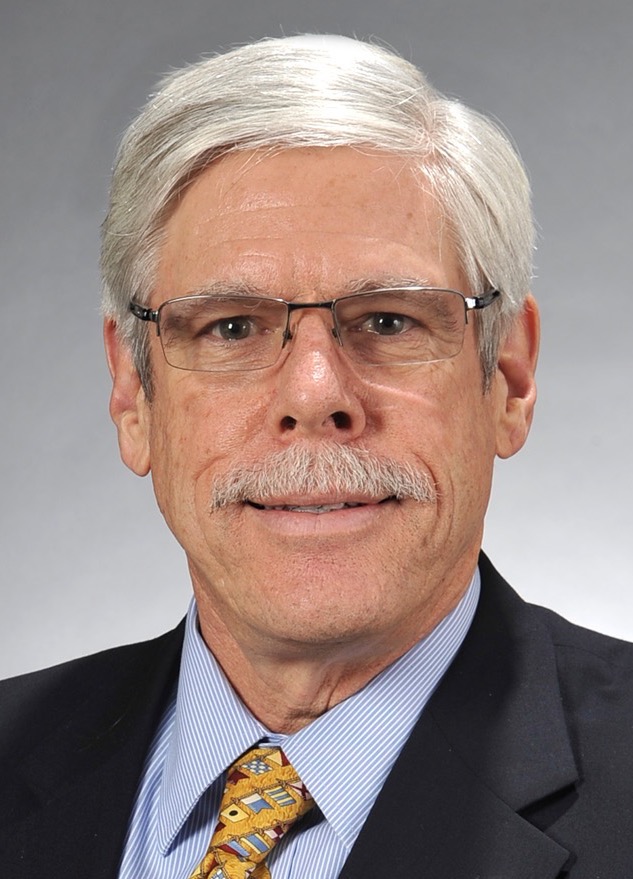
Pulsed Power as a Science: Predictive simulations for beams, z-pinches, and other applications
Thomas Mehlhorn
U.S. Naval Research Laboratory
Abstract:
This presentation will overview my 40 years of research and the people with whom I have had the pleasure of working, both domestically and internationally. In 1978 Sandia’s electron beam fusion program emerged from a weapons simulator community that was machine-oriented and relied on design principles and “JCM” criteria. Simulation tools were primarily used retrospectively. Fusions’ extraordinary requirements stimulated tremendous innovation in pulsed power, beams, pinches, and simulation tools. I started by developing ion beam deposition and transport models that were integrated into radiation-hydrodynamics codes; validated by experiments on Gamble II and Proto I; and helped initiate Sandia’s light ion beam fusion program. SDI program research led to the development of the ITS suite of electron-photon Monte Carlo codes (1985). Research on PBFA-I and PBFA-II on generating, transporting, and focusing ion beams required developing transport, diagnostic simulation, and analysis tools, which were used in focusing protons to 5 TW/cm2 (1991) and lithium beams to 2 TW/cm2, heating hohlraums to 65 eV (1996). They also helped identify anode plasma formation by electron heating as the source of diode impedance collapse leading to efforts to include electron-electrode interaction models into PIC codes and initiating hybrid fluid-PIC development (IPROP, LSP). Electrode physics remains a powerflow grand challenge for high yield fusion. In 1999 I led rad-MHD development (ALEGRA-HEDP) and oversaw EOS and conductivity model development using QMD/DFT, resulting in predictive capabilities for dynamic material experiments. Improved z-pinch dynamic hohlraum modeling and experiments resulted in thermonuclear neutrons (2004). 3-D wire array dynamics were modeled and understood. We developed advanced radiographic sources and built an LTD test bed. At NRL I have overseen advances in modeling and experiments in beams, pinches, pulsed power, and their applications (2009-). My goal throughout has been to develop and validate predictive simulation tools; making Pulsed Power a Science.
Biography:
Dr. Thomas A Mehlhorn is the Superintendent of the Plasma Physics Division at the Naval Research Laboratory (NRL) and a member of the Department of the Navy (DoN) Senior Executive Service (SES). He earned his Bachelor of Science, Master of Science and PhD in Nuclear Engineering from the University of Michigan in 1974, 1976 and 1978, respectively. He began his career as a member of technical staff in the Plasma Theory Department at Sandia National Laboratories in Albuquerque, New Mexico (1978-1988). His 1981 paper “A Finite Material Temperature Model for Ion Energy Deposition in Ion-Driven Inertial Confinement Fusion-Targets” has been cited 187 times and his model was validated by experiments on Gamble II at NRL and on Proto I at Sandia. He developed ITS 1.0 (Integrated Tiger Series of Electron-Photon Monte Carlo Transport Codes) and was the chief theorist for ion diode experiments on both PBFA-I and PBFA-II. He became a department manager in 1989 and developed an ion beam focusing simulation code (PICDIAG) that was used to design experiments that reached a record proton beam intensity (5 TW/cm2, 38 eV hohlraum). From 1992-1995 he led a team to achieve a record lithium beam intensity of 2 TW/cm2 and hohlraum temperature of 65 eV. His dynamic hohlraum ICF team won a Lockheed Martin NOVA award in 2004 for thermonuclear neutrons on Z. He became a senior manager in 2006 and led the development of a 3-D radiation-MHD code (ALEGRA), hybrid kinetic-fluid plasma codes, and QMD/DFT ab initio material modeling; dynamic material and shock physics programs; advanced radiographic source development; and managed Nevada Programs, including the Cygnus radiographic source. He joined NRL in 2019 and is responsible for a broad spectrum of research programs in plasma physics, laboratory discharge and space plasmas, intense electron and ion beams and photon sources, atomic physics, pulsed power sources, radiation hydrodynamics, high-power microwaves, laser physics, advanced spectral diagnostics, and nonlinear systems.
Dr. Mehlhorn is the author/co-author of over 160 scientific and technical papers. He has collaborated with researchers from LLNL, LANL, LBNL, NSTech, AFRL, Voss Scientific, and Prism Computational Sciences. He has sponsored students and collaborated on research with a wide set of universities including Michigan, Cornell, University of Rochester/LLE, Wisconsin, Washington State, New Mexico, Nevada Reno, Purdue, Missouri, and UC Davis. He has wide network of international collaborators including the Weizmann Institute (Israel), GSI and KIT (Germany), ILE (Japan), Imperial College and AWE (UK), and ITEP (Russia). He received the University of Michigan Engineering Alumni Society Merit Award in Nuclear Engineering and Radiological Sciences in 2004. He is the co-recipient of two NNSA Defense Programs Awards of Excellence (2007 & 2008), a Lockheed Martin NOVA award (2004), and two NRL Alan Berman Research Publication Awards (1983, 2011). He is a Fellow of the American Physical Society Division of Plasma Physics, the American Association for the Advancement of Science in Physics, and the Institute of Electrical and Electronics Engineers.
Friday, June 28, 8:30 – 9:30 AM
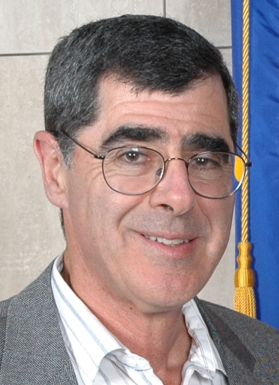
Perspectives on Research in Computational Plasma Physics with Diverse Applications to Experiments
Bruce Cohen
Lawrence Livermore National Laboratory
Abstract:
Computational plasma physics was born some fifty years ago with the development of high-speed computers. Computer simulation is well suited to the challenging nature of fundamental and applied plasma science. Plasma physics exhibits enormous ranges of time and space scales, and the underlying mathematical framework comprised of nonlinear partial differential equations and nonlinear kinetic equations does not generally admit analytic solution except in much simplified or idealized conditions. In the fifty years computational plasma physics has advanced from relatively simple calculations with limited dimensionality and scope to sophisticated and comprehensive simulation models. Moreover, computational plasma physics has matured as a significant scientific discipline with a rigorous mathematical foundation and voluminous literature. While computational plasma physics has greatly benefitted from the growth in computing capability by many orders of magnitude, the contributions from innovation in methods and algorithms have been no less important.
This talk presents a personal perspective on the development and application of computational plasma physics to plasmas in nature and in the laboratory. The examples described will be based on experience over the course of a career in computational plasma physics and will illustrate both fundamental plasma phenomena and the behavior of natural and laboratory plasmas. Some of the specific examples will include simulations of microinstabilities in magnetic mirror, tokamak, and spheromak plasmas, laser-plasma interactions, and Knudsen-layer phenomena as it affects fusion performance. The examples also will illustrate the development of appropriate models and algorithms that were well suited to simulating the phenomena of interest efficiently. A particular interest has been the development of multiple time-scale algorithms.
I am very grateful to Professor C. K. Birdsall who provided me with my initial exposure to kinetic simulation of plasmas using particles, supported and encouraged my career, and was an enthusiastic research collaborator and friend.
Biography:
Dr. Bruce Cohen received a B.S. in physics with distinction and honors at Harvey Mudd College in 1970 and an M.A .in 1971 and Ph.D. in 1975 both in physics at UC Berkeley (thesis advisor: A. N. Kaufman). He was awarded a National Science Foundation Graduate Fellowship and a Woodrow Wilson Fellowship in 1970. He was a postdoctoral researcher at the Princeton Plasma Physics Laboratory in 1975-1976. From August 1976 to retirement in January 2017, he worked as a physicist at the Lawrence Livermore National Laboratory and was a group leader for Theory and Computations in the Fusion Energy Sciences Program at LLNL from 2007 to 2016. He currently works as a subcontractor for LLNL. He was elected an American Physical Society Fellow in the Division of Plasma Physics in 1987. He served as an associate editor for both the Journal of Computational Physics and Physical Review Letters. Dr. Cohen has served on numerous committees for the American Physical Society Division of Plasma Physics and the Department of Energy, Office of Science, Fusion Energy Sciences. His research has addressed plasma and computational physics topics in magnetic confinement fusion, laser fusion, space and astrophysical plasmas, wave heating of plasmas, parametric instabilities, linear and nonlinear theory of microinstabilities and turbulent transport, and the application and development of particle and fluid plasma simulation and multiple-time-scale computational methods. He has authored or coauthored over 160 refereed journal publications and chapters in two books.

